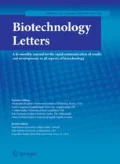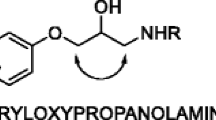Abstract
Objective
Chiral building blocks [(S)-1-(3-methylphenyl)ethanol, (S)-1-(3,4-dimethylphenyl)ethanol and (S)-1-(2,4,6-trimethylphenyl)ethanol] for drug synthesis were prepared using two green approaches: (1) the yeast Saccharomyces cerevisiae as the biocatalyst and (2) the natural deep eutectic solvents (NADES) as the alternative solvents. Three different NADES with different water contents were prepared and screened for the highest conversion and enantiomeric excess of reduction of 1-(3-methylphenyl)ethanone, 1-(3,4-dimethylphenyl)ethanone (DMPA) and 1-(2,4,6-trimethyphenyl)ethanone by S. cerevisiae. The results were used in the development of eco-friendly procedures on a preparative scale.
Results
The highest enantioselectivity of baker´s yeast was for the bioconversion of DMPA in choline chloride:glycerol with 30% (v/v) of water (ChGly30). This reaction was used for further studies. Parameters such as pre-treatment of biocatalysts and recyclation of solvent were tested for a possible scale-up of this reaction system. Conversion was improved with the ultrasound pre-treatment of the biocatalysts in ChGly30. Moreover, the biocatalytic asymmetric reduction of DMPA in ChGly30 was successfully performed on a preparative scale with the efficient recyclation of NADES in two cycles, in which the reduction of DMPA was also successfully performed.
Conclusion
Three enantioselective reductions in NADES with baker’s yeast were successfully conducted. According to the highest enantioselectivity of the biocatalyst, the asymmetric reduction of 1-(3,4-dimethylphenyl)ethanone in ChGly30 was also performed on a preparative scale with efficient recyclation and reuse of NADES as a first step towards the implementation of this method on the industrial scale.


Similar content being viewed by others
References
Anderson BA, Hansen MM, Harkness AR, Henry CL, Vicenzi JT, Zmijewski MJ (1995) Application of a practical biocatalytic reduction to an enantioselective synthesis of the 5H-2,3-benzodiazepine LY300164. J Am Chem Soc 117:12358–12359
Bommarius AS, Riebel BR (2004) Biocatalysis in Non-conventional Media. In: Bommarius AS, Riebel BR (eds) Biocatalysis. WILEY-WCH Verlag GmbH & Co. KGaA, Weinheim, pp 339–373
Breuer M, Ditrich K, Habicher T, Hauer B, Keßeler M, Stürmer R, Zelinski T (2004) Industrial methods for the production of optically active intermediates. Angew Chemie 43:788–824
Cheng C, Nian Y (2016) Journal of Molecular Catalysis B : Enzymatic Enantioselective reduction of 4-phenyl-2-butanone to chiral 4-phenyl-2-butanol in glycerol modified Saccharomyces cerevisiae cell culture. J Mol Catal B 123:141–146
Choi YH, van Spronsen J, Dai Y, Verberne M, Hollmann F, Arends IWCE, Verpoorte R (2011) Are natural deep eutectic solvents the missing link in understanding cellular metabolism and physiology? Plant Physiol 156:1701–1705
Clark J, Macquarrie D (2002) Handbook of green chemistry and technology. Blackwell Science, Cornwall
Contente ML, Serra I, Palazzolo L, Parravicini C, Gianazza E, Eberini I, Pinto A, Guidi B, Molinaria F, Romano D (2016) Enzymatic reduction of acetophenone derivatives with a benzil reductase from Pichia glucozyma(KRED1-Pglu): electronic and steric effects on activity and enantioselectivity. Org Biomol Chem 14:3404–3408
Cvjetko Bubalo M, Jurinjak Tušek A, Vinković M, Radošević K, Gaurina Srček V, Radojčić Redovniković I (2015a) Cholinium-based deep eutectic solvents and ionic liquids for lipase-catalyzed synthesis of butyl acetate. J Mol Catal B 122:188–198
Cvjetko Bubalo M, Mazur M, Radošević K, Radojčić Redovniković I (2015b) Baker’s yeast-mediated asymmetric reduction of ethyl 3-oxobutanoate in deep eutectic solvents. Process Biochem 50:1788–1792
Dai Y, van Spronsen J, Witkamp GJ, Verpoorte R, Choi YH (2013) Natural deep eutectic solvents as new potential media for green technology. Anal Chim Acta 766:61–68
Dai C, Xiong F, He R, Zhang W, Ma H (2017) Effects of low-intensity ultrasound on the growth, cell membrane permeability and ethanol tolerance of Saccharomyces cerevisiae. Ultrason Sonochem 36:191–197
Durand E, Lecomte J, Villeneuve P (2013) Deep eutectic solvents: Synthesis, application, and focus on lipase-catalyzed reactions. Eur J Lipid Sci Technol 115:379–385
Goldberg K, Schroer K, Lütz S, Liese A (2007) Biocatalytic ketone reduction—A powerful tool for the production of chiral alcohols—Part II: Whole-cell reductions. Appl Microbiol Biotechnol 76:249–255
Gröger H, Hummel W, Buchholz S, Drauz K, Van Nguyen T, Rollmann C, Hüsken H, Abokitse K (2003) Practical asymmetric enzymatic reduction through discovery of a dehydrogenase-compatible biphasic reaction media. Org Lett 5:173–176
Li G, Wang JB, Reetz MT (2018) Biocatalysts for the pharmaceutical industry created by structure-guided directed evolution of stereoselective enzymes. Bioorganic Med Chem 26:1241–1251
Liang J, Zhang Y, Sun A, Deng D, Hu Y (2016) Enantioselective resolution of (±)-1-phenylethanol and (±)-1-phenylethyl acetate by a novel esterase from Bacillus sp. SCSIO 15121. Appl Biochem Biotechnol 178:558–575
Mao S, Yu L, Ji S, Liu X, Lu F (2016) Evaluation of deep eutectic solvents as co-solvent for steroids 1-en-dehydrogenation biotransformation by Arthrobacter simplex. J Chem Technol Biotechnol 91:1099–1104
Maugeri Z, Domínguez De María P (2014) Whole-cell biocatalysis in deep-eutectic-solvents/aqueous mixtures. ChemCatChem 6:1535–1537
Naik HG, Yeniad B, Koning CE, Heise A (2012) Investigation of asymmetric alcohol dehydrogenase (ADH) reduction of acetophenone derivatives: effect of charge density. Org Biomol Chem 10:4961–4967
Nakamura K, Yamanaka R, Harada T (2003) Recent developments in asymmetric reduction of ketones with biocatalysts. Tetrahedron 14:2659–2681
Nguyen LA, He H, Pham-Huy C (2006) Chiral drugs: an overview. Int J Biomed Sci 2:85–100
Paiva A, Craveiro R, Aroso I, Martins M, Reis RL, Duarte ARC (2014) Natural deep eutectic solvents–solvents for the 21st century. ChemInform 45:1063–1071
Panić M, Majerić Elenkov M, Roje M, Cvjetko Bubalo M, Radojčić Redovniković I (2018) Plant-mediated stereoselective biotransformations in natural deep eutectic solvents. Process Biochem 66:133–139
Patel RN (2004) Biocatalytic synthesis of chiral pharmaceutical intermediates. Food Technol Biotechnol 42:305–325
Prelog V (1964) Specification of the stereospecificity of some oxido-reductases by diamond lattice sections. Pure Appl Chem 9:119–130
Radošević K, Čanak I, Cvjetko Bubalo M, Markov K, Frece J, Gaurina Srček V, Radojčić Redovniković I (2018) Antimicrobial, cytotoxic and antioxidative evaluation of natural deep eutectic solvents. Environ Sci Pollut Res 25:14188–14196
Raj SB, Ramaswamy S, Plapp BV (2014) Yeast alcohol dehydrogenase structure and catalysis. Biochemistry 53:5791–5803
Rodrigues JAR, Moran PJS, Conceição GJA, Fardelone LC (2004) Recent advances in the biocatalytic asymmetric reduction of acetophenones and α.β-unsaturated carbonyl compounds. Food Technol Biotechnol 42:295–303
Ruesgas-Ramon M, Figueroa-Espinoza MC, Durand E (2017) Application of Deep Eutectic Solvents (DES) for phenolic compounds extraction: overview, challenges, and opportunities. J Agric Food Chem 65:3591–3601
Sheldon RA (2016) Biocatalysis and biomass conversion in alternative reaction media. Chemistry 22:12984–12999
Sheldon RA, Pereira PC (2017) Biocatalysis engineering: the big picture. Chem Soc Rev 46:2678–2691
Smith EL, Abbott AP, Ryder KS (2014) Deep eutectic solvents (DESs) and their applications. Chem Rev 114:11060–11082
Vandenberghe A, Markó IE, Lucaccioni F, Lutts S (2013) Enantioselective hydrolysis of racemic 1-phenylethyl acetate by an enzymatic system from fresh vegetables. Ind Crops Prod 42:380–385
Wandrey C, Liese A, Kihumbu D (2000) Industrial biocatalysis: past, present, and future. Org Process Res Dev 4:286–290
Wei P, Liang J, Cheng J, Zong MH, Lou WY (2016) Markedly improving asymmetric oxidation of 1-(4-methoxyphenyl) ethanol with Acetobacter sp. CCTCC M209061 cells by adding deep eutectic solvent in a two-phase system. Microb Cell Fact 15:1–11
Yadav JS, Reddy GSKK, Sabitha G, Krishna AD, Prasad AR, Rahaman HUR, Rao KV, Rao AB (2007) Daucus carota and baker’s yeast mediated bio-reduction of prochiral ketones. Tetrahedron Asymmetry 18:717–723
Yang ZH, Yao SJ, Lin DQ (2004) Improving the stereoselectivity of asymmetric reduction of 3-oxo ester to 3-hydroxy ester with pretreatments on bakers’ yeast. Ind Eng Chem Res 43:4871–4875
Acknowledgements
The work was supported by the Croatian Science Foundation (Grant No. 9550).
Supporing information
Figure 1S. Time—course of acetophenones bioreductions with baker’s yeast (Fig 1S).
Author information
Authors and Affiliations
Corresponding author
Electronic supplementary material
Rights and permissions
About this article
Cite this article
Panić, M., Delač, D., Roje, M. et al. Green asymmetric reduction of acetophenone derivatives: Saccharomyces cerevisiae and aqueous natural deep eutectic solvent. Biotechnol Lett 41, 253–262 (2019). https://doi.org/10.1007/s10529-018-2631-3
Received:
Accepted:
Published:
Issue Date:
DOI: https://doi.org/10.1007/s10529-018-2631-3





